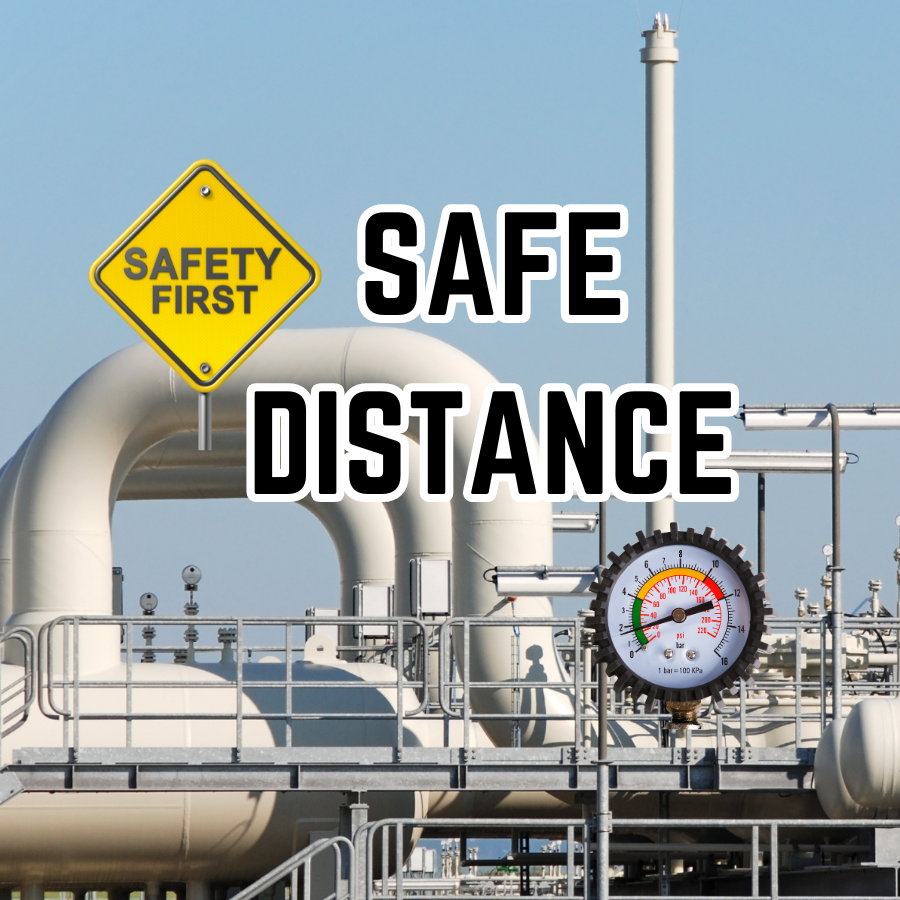Hand Calculation of Piping Stress
Here are the formulas for the hand calculations of piping stress:
Internal Pressure Stress: It is calculated by the formula:
P * r / t, where 'P' is the internal pressure, 'r' is the inside radius of the pipe, and 't' is the wall thickness.Longitudinal Stress: This is caused by the internal pressure acting along the length of the pipe and is calculated by the formula:
P * r / (2 * t).Weight Stress: This is calculated by the formula:
w * L / A, where 'w' is the weight per unit length, 'L' is the length of the pipe span, and 'A' is the cross-sectional area.Temperature Stress: The temperature stress is calculated by the formula:
α * ΔT * σi, where 'α' is the coefficient of thermal expansion, 'ΔT' is the change in temperature, and 'σi' is the initial stress.Total Stress: The total stress is calculated by adding up all the individual stresses. If the total stress exceeds the allowable stress of the pipe material, the design needs to be revised.
After obtaining these individual stress calculations, the next step is to evaluate the total stress on the pipe. The total stress is the summation of the internal pressure stress, longitudinal stress, weight stress, and temperature stress. This is calculated using the formula:
Total Stress = Internal Pressure Stress + Longitudinal Stress + Weight Stress + Temperature Stress
It's essential to note that if the total stress exceeds the allowable stress of the pipe material, the design will need to be revised. This is because exceeding the material's stress capacity can lead to structural failure, which can be dangerous and costly. Therefore, these calculations play a significant role in maintaining the safety and efficiency of a piping system.
It's also important to remember that these calculations are estimations and they depend on several factors, such as the material of the pipe, operating conditions, and more. Therefore, it's often necessary to perform these calculations at multiple stages of the design and maintenance process to ensure the piping system's reliability and safety.
In conclusion, hand calculations of piping stress involve a combination of physics, mathematics, and engineering principles to ensure that a piping system can safely withstand the pressures and stresses it will face during operation. This process is a key element of pipeline design and maintenance, helping engineers identify potential issues and make necessary adjustments to improve the system's performance and safety.
The process of hand calculations of piping stress continues with the careful consideration of the results and their implications on the design and maintenance of the piping system. As mentioned, these calculations are estimations and depend on several factors such as the material of the pipe, operating conditions, and more.
Understanding the results and what they mean for the operation and safety of the piping system is crucial. If the total stress exceeds the allowable stress of the pipe material, the design will need to be revised. This could involve changing the material of the pipe, adjusting the thickness of the pipe walls, or altering the operating conditions.
This is because exceeding the material's stress capacity can lead to structural failure, which can be dangerous and costly. Structural failure could lead to leaks, bursts, or even complete system failure, resulting in potential safety hazards and significant repair or replacement costs.
Moreover, these calculations aren't a one-time process. They need to be performed at multiple stages of the design and maintenance process. For instance, initial calculations are done during the design phase to choose appropriate materials and dimensions. Then, as the operating conditions change or as the pipe ages and potentially deteriorate, these calculations should be revisited to ensure the piping system's ongoing reliability and safety.
Type of analysis should be carried out according to the below table;
Type of Stress Analysis
C: Computer Analysis Required
S:Simplified Calculation Method Can Be Applied
N:No Analysis Required
Notes:
1-For 3 or more pumps layout, use a computer
2-Effect of reaction forces due to valve discharge
3-For temperatre range of 200 ℃ and above
4-"C" for temperature range of -30℃ and below
5-"C" for temperature range of 300℃ and above
In conclusion, hand calculations of piping stress are a vital part of pipeline design and maintenance. They involve a combination of physics, mathematics, and engineering principles, and they play a significant role in maintaining the safety and efficiency of a piping system. By helping engineers identify potential issues, these calculations allow necessary adjustments to be made to improve the system's performance and safety.





This blog is intended as a guide to determining the minimum safe spacing of plants and equipment in Oil Refineries, Petrochemical Complexes, and similar installations.
The spacing recommendations will apply in the absence of Clients' standards or supplement such standards where necessary. They are based on current industry practice.
The spacing recommendations aim to ensure that available plot areas are used economically without affecting personnel safety or plant vulnerability.